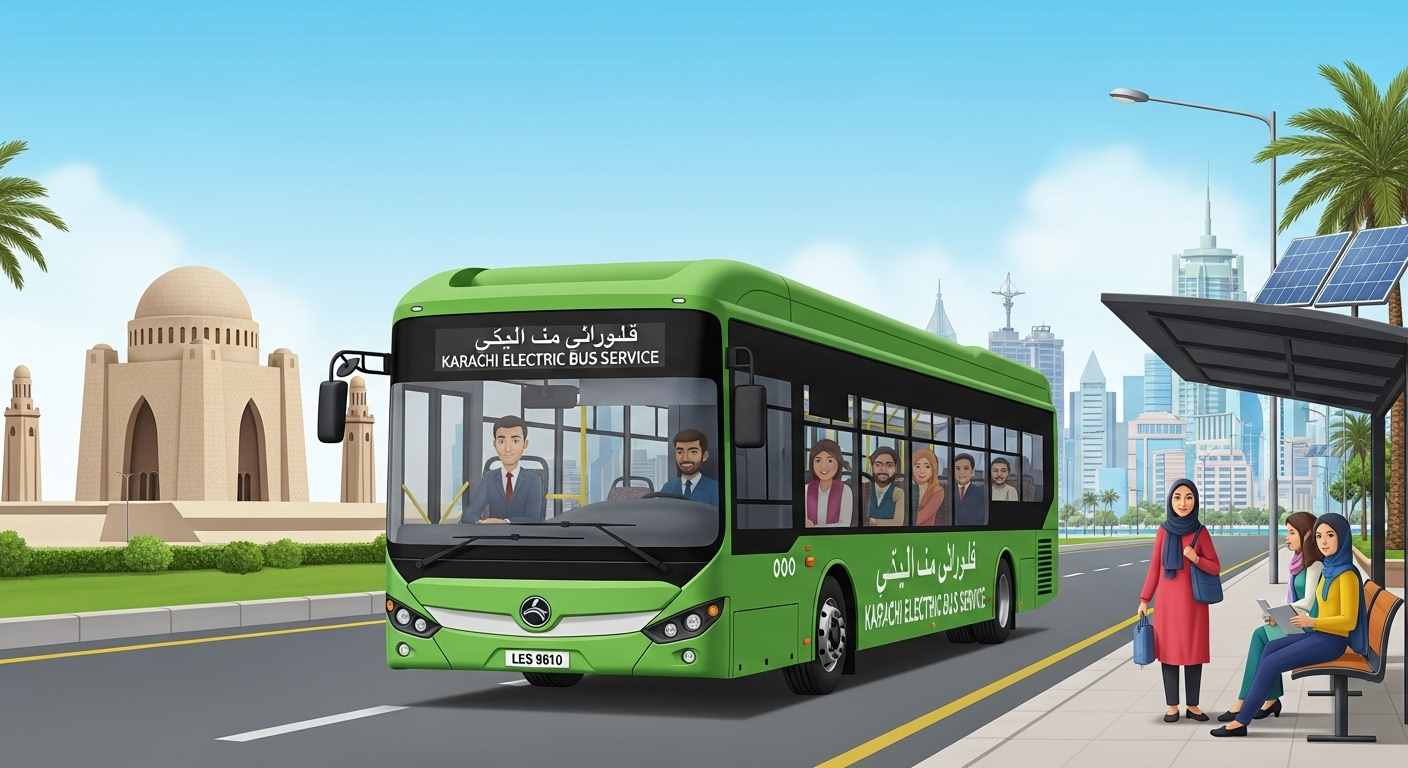Karachi Welcomes 50 New Electric Buses to Strengthen Green Public Transport Network
In a promising step toward eco-friendly urban development, the Sindh government has officially added 50 new electric buses to Karachi’s public transportation fleet. The initiative is part of a broader strategy to modernize the city’s mass transit system, reduce air pollution, and offer affordable, efficient travel to millions of daily commuters.
This latest induction takes the total number of operational electric buses in the city to 200, with plans already underway to increase this figure further by the end of the year.
A Shift Toward Sustainable Mobility
Speaking at the inauguration event at the People’s Bus Service Depot, Sindh Transport Minister Sharjeel Inam Memon highlighted the government’s ongoing commitment to building a more eco-friendly and pollution-free Karachi.
“We are not just launching buses; we are showing the way this city improves,” he also stated. “Our goal is to reduce carbon emissions, improve air quality, and give people a better, safer alternative to private vehicles and old transport modes.”
The new buses are fully electric and operate on zero-emission technology, helping combat the growing pollution problem in the metropolis. They also produce significantly less noise compared to diesel-fueled buses, contributing to noise pollution control in congested urban zones.
Routes and Coverage Areas
These newly electric buses will operate on high-traffic routes across the city, including:
- Saddar to Gulshan-e-Iqbal
- Korangi Industrial Area to Clifton
- North Karachi to Shah Faisal Colony
- Malir to Tower
- Nagan Chowrangi to Sea View
These routes have been selected based on commuter demand, population density, and connectivity with major commercial and educational hubs.
Modern Features and Facilities
Every bus in the fleet comes with advanced features designed to enhance both passenger comfort and overall travel safety. These include:
- Air conditioning
- Low-floor accessibility for elderly and disabled passengers
- Digital route maps and LED displays
- CCTV surveillance for security
- GPS tracking linked to the central monitoring unit
- USB charging ports and eco-leather seats
Moreover, dedicated women’s seating areas and automated announcement systems have been added to enhance accessibility and convenience for all segments of the population.
Charging Infrastructure Expansion
To support the growing fleet of electric buses, the government has also begun installing fast-charging stations at key depots across Karachi. Charging infrastructure is currently operational at Saddar, Surjani, Malir Halt, and Gulistan-e-Johar.
According to the Sindh Mass Transit Authority, each electric bus can travel up to 250 kilometers on a single charge, making them well-suited for daily urban routes.
Affordable Travel for All
In keeping with its public welfare mission, the government has ensured that fares for these electric buses remain affordable. Tickets range from PKR 30 to PKR 60, depending on the route length.
A daily pass system is also being introduced for students and workers, allowing unlimited travel for a fixed price of PKR 100 per day.
This pricing model aims to reduce reliance on fuel-consuming vehicles, while also easing the financial burden on lower and middle-income commuters.
Public Reaction and Social Media Praise
Karachiites have largely welcomed the move, with many taking to social media to express appreciation for the clean, efficient, and modern buses. Hashtags like #GreenKarachi, #ElectricBusRevolution, and #CleanCommute have been trending on Twitter since the launch.
Commuters praised the timely arrivals, air conditioning, and cleanliness of the buses — features that are often lacking in the city’s traditional minibuses and rickshaws.
“It’s a refreshing experience — smooth, silent and affordable,” said Ahsan Raza, a university student who rode the electric bus from University Road to Saddar. “This is the Karachi we’ve been waiting for.”
Impact on Environment and Economy
Environmental experts believe that the electric bus rollout could have long-term benefits for the city’s health and economy. With Karachi ranking among the most polluted cities in South Asia, every step toward reducing vehicular emissions counts.
The reduced dependence on imported fuel also contributes to stabilizing the local economy and decreasing the city’s carbon footprint.
What’s Next?
The Sindh government has showed that this is just the beginning. Plans are underway to introduce an app-based smart ticketing system, real-time bus tracking for passengers, and integration with the Karachi Circular Railway (KCR) in the near future.
By 2026, the transport ministry hopes to bring the number of electric buses in the city to 500, creating one of the largest electric bus networks in South Asia.
Conclusion
The addition of 50 new electric buses marks a significant milestone in Karachi’s journey toward sustainable and inclusive urban development. If implemented and maintained effectively, this initiative can transform public transport in the city and set an example for other metropolitan centers in Pakistan.
As Karachi continues to grow, modern, environmentally-friendly solutions like these are not just a luxury — they’re a necessity.



